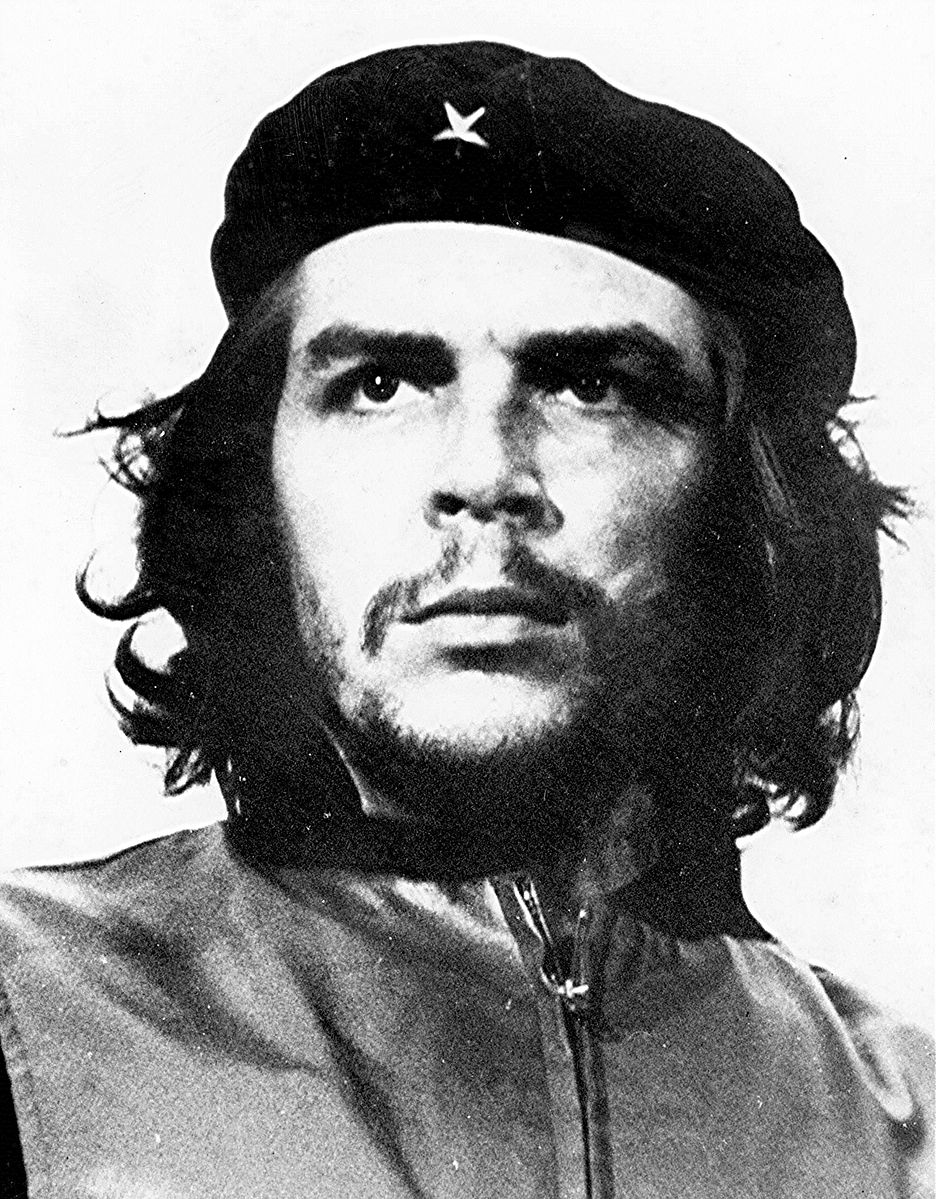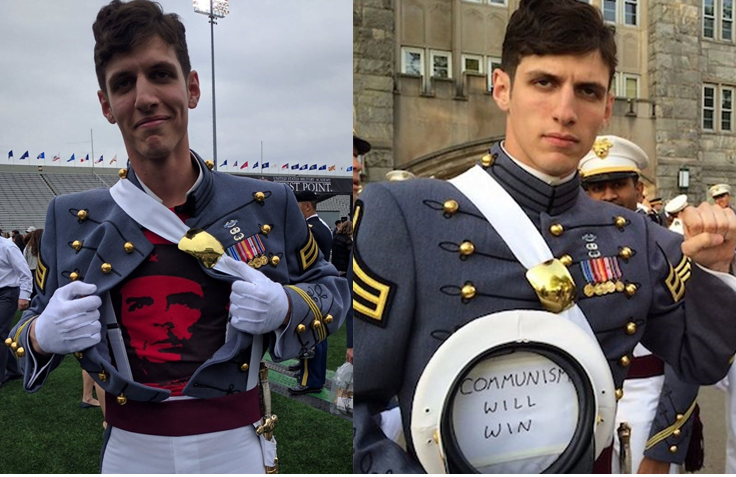
It was a late September afternoon in 2017, and a 25-year old officer in the U.S. Army had just tweeted an image of himself in a Che Guevara t-shirt. The photo showed him at his West Point graduation in 2016, his neat dress grays parted to reveal a silkscreen of “The Heroic Guerilla,” Alberto Korda’s iconic 1960 photograph of Ernesto “Che” Guevara, the fire-eyed Argentine militant and hero of the Cuban Revolution. Che was pictured from the chin up, his dark hair flowing behind him, his eyes blazing beneath the man’s vest and his brass-plated service medallions.
Once a proud enlistee in an elite Ranger unit, Second Lieutenant Spenser Rapone had lost his faith in the Army, outraged by the abuse of civilians he’d seen on a tour in Afghanistan. Now stationed at Fort Drum, New York, with the 10th Mountain Division, he hoped his Che Guevara tweet would accomplish three objectives: expose the US Military as a “force of imperialist aggression”; express support for national anthem protests at sporting events; and prod his commanding officers to grant him an early discharge. These broad, somewhat disparate, aims found a common expression in Che, who’s been a potent, and pliable, emblem of dissent since his death in 1967.
The response to the tweet was overwhelming. Military boosters rushed online to voice their disapproval, Che admirers far and wide tweeted their support, and the West Point selfie morphed into a viral Rorschach Test. We viewed “The Commie Cadet,” as journalists dubbed Rapone, through the same blurry lens that millions view Korda’s photo: with little knowledge of the man in the picture; as a blank canvas for our hopes, fears and beliefs.
When Rapone’s post entered my timeline one chilly autumn night, I shivered with recognition. I had spent much of my youth in a “Heroic Guerilla” t-shirt and I was starting to gather the stories of people like me and him, the restless Millennial youth who have dragged the “Korda Che” into the digital age. They represent a staggering range of cultures and subcultures—Salvadoran doctors and Yazidi refugees; Siberian paintball players and Bosnian “biker chicks”; Marxist students in India and neo-fascists in Italy, to name just a few I’ve interviewed over the past three years—and their posts on platforms like TikTok, Twitter, and Instagram have been viewed millions of times.

But amid all the furious tapping of picture and video apps—all the selfies, the hashtags, the parody memes—no post has received a stronger response than Spenser Rapone in his Che shirt. An utterly singular image, unique in its stunning blend of imperial symbolism and revolutionist chic, it thrusts us into a virtual world where photos are social currency; where politics...
You have reached your article limit
Sign up for a digital subscription and continue reading all new issues, plus our entire archives, for just $1.50/month.
Already a subscriber? Sign in




